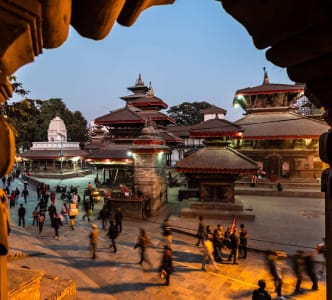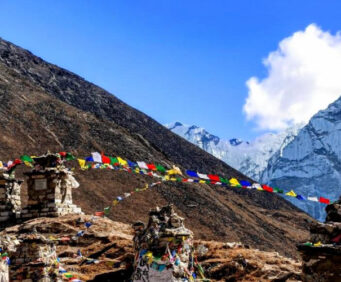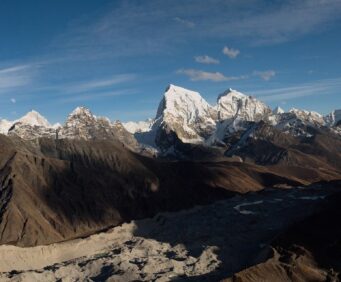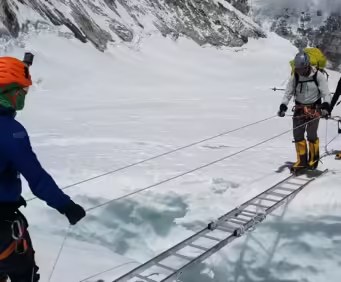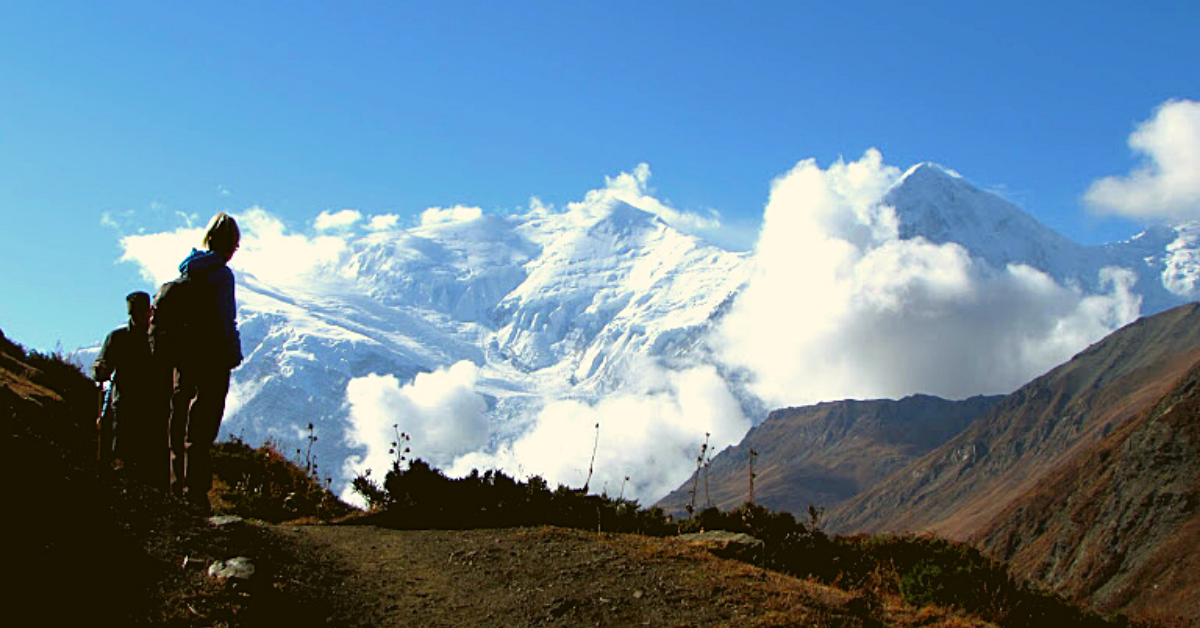
Annapurna Circuit Vs. Annapurna Sanctuary Trek
17th December, 2023 - Posted By: Himalayan AbodeAmong the most well-known hikes in the breathtaking Annapurna region are the Annapurna Circuit and Annapurna Sanctuary Trek. These trips should provide an incredible adventure. The Annapurna Sanctuary trekking route is the popular choice for those wishing to explore the major mountain. The Annapurna Mountains are renowned for their beauty and culture.
The base camp of the world’s tenth tallest mountain, 40 kilometers north of Pokhara in the central area of Nepal, may be reached at the foot of Annapurna 1’s south face via the Annapurna Sanctuary trek path. Hikers who can walk with a small rucksack for at least 6 to 7 hours a day can do the intermediate Annapurna Sanctuary Trek.
A hiking path in Nepal’s center Annapurna mountain range is called the Annapurna Circuit trek. Due to restrictions by the Nepalese government, international hikers were not allowed in the Annapurna region before 1977 AD.
The total length of the trips varies from 160 to 230 kilometers, contingent upon the means of transportation taken after the track ends. This path crosses two different river valleys and circles the Annapurna range.
On the western side of the Tibetan Plateau, at Thorung La Pass, is where this path reaches its highest point. Every trekker moves in a counter-clockwise direction since it is safer and simpler to cross the high Thorung La pass this way, and it also results in a slower daily attitude gain.
Common factors of Annapurna Circuit and Annapurna Sanctuary Trek
While both routes pass over the Annapurna Ranges, they do not take the same path or go in the same direction. A Nepali ethnic group descended from Tibet, the Gurung people are encountered on both walks and offer breathtaking views of the Annapurnas, Hiunchuli, and Machhapuchchhre.
The Gurung people live mostly in the central and mid-western portions of the country. This is where the similarities end though, as there are more differences than parallels between the two paths.
Trekking in the Annapurna Sanctuary and the Annapurna Circuit requires the following permits: TIMS card for the Annapurna Conservation Area Permit (ACAP) Not to mention, both climbs have lovely hot springs to wash tired (and dirty!) bodies if they need some respite after fighting their way up the mountain routes.
Different factors between Annapurna Circuit and Annapurna Sanctuary Trek
While the Annapurna Circuit starts and ends in Taal, the Sanctuary trek starts and ends in Pokhara. While each traveler will have their unique highlights, there are substantial differences between the key highlights of the two tours.
It’s breathtaking to cross into Mustang on the Annapurna Circuit. More than the rest of Nepal, the area is reminiscent of Tibet. One of the highlights of the Annapurna Sanctuary walk is standing at the foot of two of the tallest mountains in the Himalayas at a sacred site. Whether you believe in gods or not, it’s easy to understand why locals think they do.
Hikers on the Annapurna Sanctuary trip get to the foot of some of the most stunning peaks in the area, whereas the goal of the Annapurna Circuit is to complete a loop. Though it is not an out-and-back journey, the Annapurna Sanctuary trek does not entirely retrace the inbound steps on the way back, some areas overlap.
Situated between Manang and Mustang, the 5,416-meter Thorong La (pass) is one of the most challenging sections of the Annapurna Circuit. That altitude has negative effects on many hikers, so it’s imperative to get over the mountain and down to a lower height as soon as possible.
The Annapurna Sanctuary Walk does not have any high passes while having a lot of uphill terrain and reaching 4,130 meters.
Highlights of Annapurna Circuit and Annapurna Sanctuary Trek
The distinctions between the Highlights set them apart. Reached high above the Kali Gandaki Gorge, Ghorepani is a well-known ethnic community accessible via the Annapurna Sanctuary Trek. It also leads to a viewpoint offering a broad perspective of the Annapurna Massif. In the same vein, one can visit the Hinku Cave next to Deurali, another popular trek point for Annapurna Base Camp.
Ascending Annapurna Circuit reveals changing landscapes: dense forests and forested slopes in places like Thame and Jagat. The vibrancy of the surroundings quickly gives way to treeless stony slopes as you approach Manang. The walking trail leads to Muktinath, one of the most revered Hindu and Buddhist temples in Nepal.
Difficulty of Annapurna Circuit and Annapurna Sanctuary Trek
While the Annapurna Circuit Trek may be challenging to finish due to snow blocking the mountain route, the Annapurna Sanctuary Trek is still possible in December. For those looking for a more difficult hike, the Annapurna Circuit might be perfect. In case you are looking for a trek that is not too challenging, you may consider the Annapurna Sanctuary Journey.
Annapurna Circuit Trek
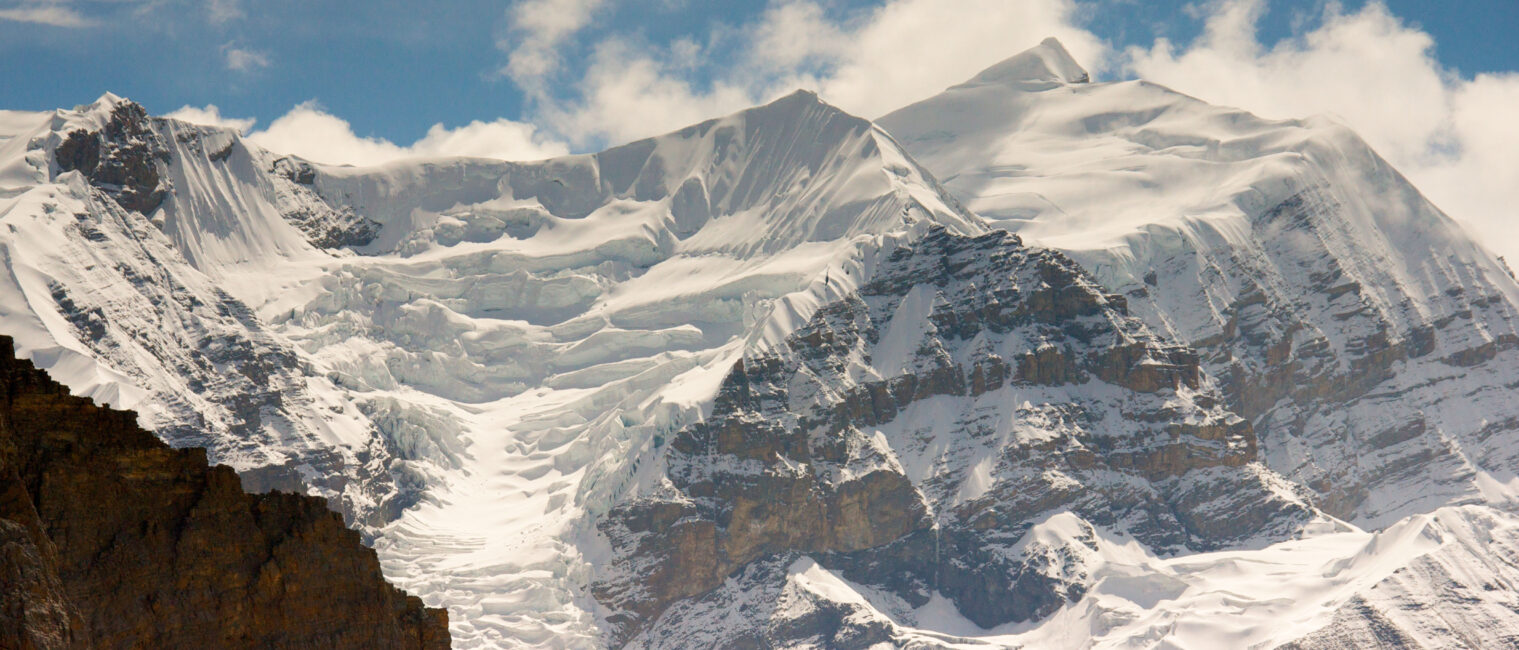
The estimated cost of the trip depends on the kind of trek and the total amount of money spent. Nonetheless, the cost frequently falls between US $1,000 and US $1,500. It also depends on how much money is desired to be spent on extra-indulgent activities.
Outline Itinerary for Annapurna Circuit Trek
Day 01: Kathmandu to Besishahar
Day 02: Besisahar to Chame (2,670m)
Day 03: Chame to Pisang (3,200m)
Day 04: Pisang to Manang (3,540m)
Day 05: Acclimatization day in Manang
Day 06: Manang to Yak Kharka (4,350m.)
Day 07: Yak Kharka to Thorong Phedi (4,420m.)
Day 08: Thorong Phedi to Muktinath via Thorong La
Day 09: Muktinath to Jomsom
Day 10: Jomsom to Pokhara flight
Day 11: Pokhara to Kathmandu
Day 12: Final Departure
Best Time of Annapurna Circuit Trek
The Annapurna Circuit Trek (Round Annapurna) is best enjoyed in the fall, from September to November, and in the spring, from March to May. The days are bright and warm throughout this time, with beautiful views. The daytime temperature right now ranges from 10 to 30 degrees Celsius.
The nights are frequently chilly, ranging in temperature from 5 to -20 C. It is also feasible to trek around Annapurna in the winter (December, January, and February), though most people may find the temperatures too severe. Rain and monsoon will impede trekking throughout the summer months of June, July, and August, although a keen botanist may find the summer journey advantageous.
Accommodation in Annapurna Circuit Trekking
There are many hospitable and spotless lodges along the trail, so planning accommodations for the Annapurna Circuit Trek doesn’t need a lot of work. A timber bed with a basic mattress or foam pad, a cotton pillow, and a blanket or quilt is standard equipment in lodge rooms.
All of them feature a large dining room/lounge and a few have electric lights. We will book a daily room in a nearby lodge for you and your company. The necessary rooms are reserved for you by a porter who is sent ahead of us (rooms cannot be reserved in advance here).
Unless otherwise noted if clients have specific preferences, we provide you with tourist standard hotels in the 3-star categories in Kathmandu and Pokhara.
The Annapurna Sanctuary Trek
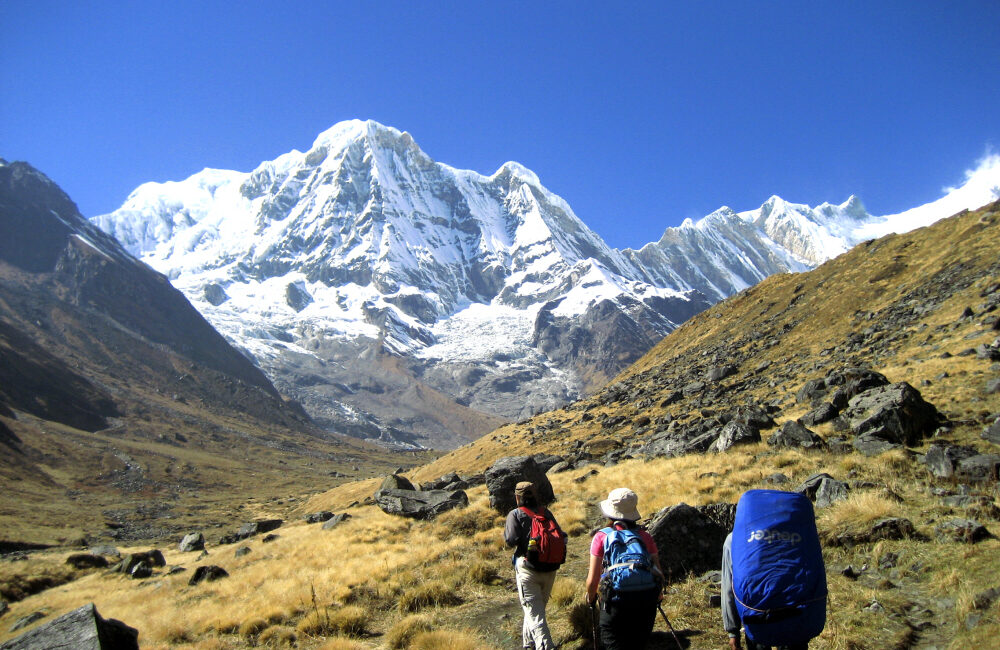
The estimated cost depends on the kind of trek being done as well as the total amount of money being spent. Still, the price generally falls between $700 to $1,200. It also depends on how much money is desired to be spent on extra-indulgent activities.
You must have an ACAP Trekking Permit ($20) and a TIMS Card before you may enter the trek. These are available for purchase at the Nepal Tourism Board headquarters in Pokhara or Kathmandu. For the length of your walk, keep these in a dry bag along with a reliable map. You will need to register at certain checkpoints in some of the villages you pass through.
- Money: Bring enough cash to cover the number of days you anticipate spending on the path. A rough estimate is $15–25 (2,000–2,500 NPR) per day, covering lodging and three hot meals daily.
- Porters and Guides: Although unnecessary, some people on a tighter budget might want to hike with a porter ($20 per day) or guide ($25 per day). It is certainly possible to complete the Annapurna Sanctuary without either. In Pokhara, both can be arranged.
- Food: Dal Bhat, a typical lentil soup from Nepal, is available everywhere. It comes with unlimited refills, unlike other meals. Practical for large appetites induced by hiking.
- Travel Insurance: Before embarking on a tour, we strongly urge you to purchase travel insurance, which should include coverage for medical costs, emergency repatriation, helicopter evacuation at high altitudes, and luggage loss. When you travel to Nepal, we ask that you bring your insurance documentation.
Outline Itinerary for Annapurna Sanctuary Trek
Days 1 and 2: Travel to Kathmandu, get ready, relax, and go sightseeing
Day 3: Take a flight to Pokhara, then drive to Pokhara-Naya Pul. From there, take a quick hike to Ulleri (1,960m).
Days 4 – 9: Travel the trail, pausing at night to rest, and on day 9, arrive at our highest point, Annapurna BC.
Days 9–13: After spending time in various places, we first retrace our steps along the route before diverging to see Jhinu Hot Springs, Dhampus, and Phedi. Afterward, we took a car to Pokhara.
Day 14: Fly from Pokhara to Kathmandu
Day 15: Continue your journey
FAQS
Which Trek should you choose to go on?
Consider these suggestions for a decision. No right or wrong answer; choose what suits you best.
How long are you going to have?
There is a quicker trek to Annapurna Sanctuary. To what extent have you hiked before? While both climbs are challenging, the Annapurna Circuit trek requires more trekking days and a high pass.
Which is more interesting to you, diverse landscapes or incredibly striking mountains?
The Sanctuary has a little bit more wow factor, while the Circuit offers more diversity.
Recent Posts
